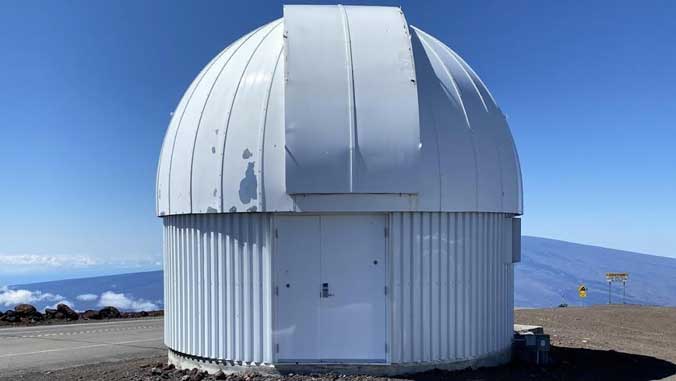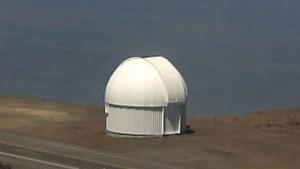
The Hawaiʻi Board of Land and Natural Resources (BLNR) approved the Conservation District Use Application (CDUA) submitted by the University of Hawaiʻi at Hilo Center for Maunakea Stewardship (CMS) for the decommissioning of the UH Hilo Hōkū Kea Observatory on the summit of Maunakea. The CDUA was approved by the BLNR at the board’s April 14, 2023 meeting. The decommissioning of Hōkū Kea is tentatively scheduled to begin in late 2023 and take about five months to complete.

Hōkū Kea is the second telescope on Maunakea now in the final phase of the extensive decommissioning process required under the Mauna Kea Comprehensive Management Plan. The deconstruction and site restoration of the California Institute of Technology Submillimeter Observatory is scheduled to be completed in 2023.
UH reaffirmed its promise to fulfill its commitment to complete the decommissioning of the two telescopes after the new Maunakea Stewardship and Oversight Authority was created in 2022 by the state Legislature.
“This is another important milestone as we prepare to transfer stewardship responsibility of the mauna to the new authority,” said CMS Executive Director Greg Chun. “We want to mahalo the BLNR and the Department of Land and Natural Resources for their time and attention to this project, which remains a top priority for UH Hilo.”
The new authority will assume all management responsibilities of Maunakea from the Hawaiʻi Department of Land and Natural Resources on or before July 1, 2028. In addition, the university is working with the authority and department to transfer its leases, conservation district use permits, and an easement for lands on Maunakea to the authority on or before July 1, 2028, as required by Act 255. After the decommissioning of the two telescopes is completed, there will be 11 operating astronomy facilities on Maunakea. Before the creation of the new authority, the university had adopted a Master Plan, which committed to no more than nine facilities on Maunakea.
Hōkū Kea decommissioning project
The decommissioning of Hōkū Kea will include the removal of the Hōkū Keʻa Observatory
Building, Generator Building, and associated telecommunications and electrical infrastructure. The project includes full removal and partial restoration to a basic
topography that is consistent with the area. The CDUA was approved with various conditions, as listed in the staff report presented to BLNR, to ensure impacts are avoided, minimized, or mitigated.
The Final Environmental Assessment and Finding of No Significant Impact announced in June 2022 found that the project will have no significant adverse environmental impacts. Preparation of the assessment included extensive consultation and outreach with the Native Hawaiian community through the preparation of a cultural impact assessment; meetings with Kahu Kū Mauna; and an invitation to participate in the process published in the Office of Hawaiian Affairs’ Ka Wai Ola newsletter and direct outreach to native Hawaiian organizations and stakeholders.
Located on the southeastern side of the 528-acre astronomy precinct on the summit of Maunakea, the Hōkū Kea site was built by the U.S. Air Force in 1970 and was one of the first observatories on Maunakea before it was given to UH Hilo.

